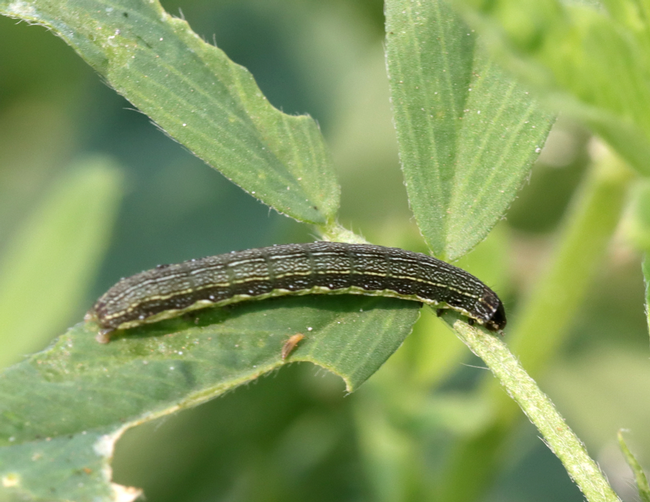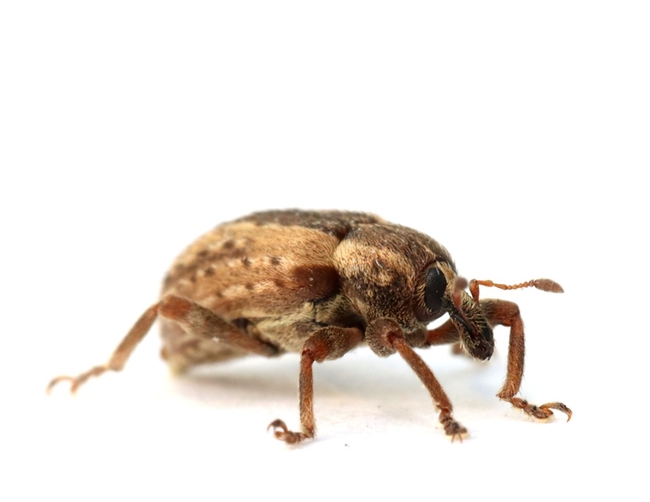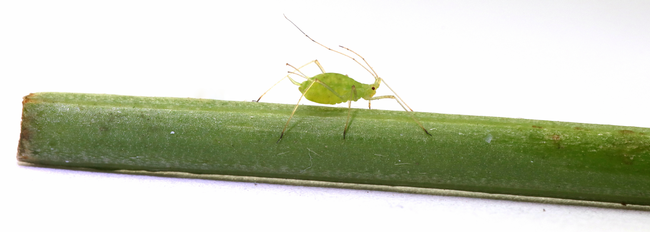A virtual forage and alfalfa field day - our insect pest contribution
This year, the Kearney Research and Extension Center Alfalfa and Forage Field Day went virtual. Attendees did not get the chance to look out over lush fields of alfalfa or towering plantings of sorghum, but they get did an update on ongoing work in alfalfa and other forages. Our team put together a rapid-fire video to discuss what are typically the key insect pests in California alfalfa: summer worms, alfalfa weevils, and aphids.
Summer worms: Western yellow-striped armyworm, beet armyworm, and alfalfa caterpillar
Larvae of these moths and butterfly defoliate alfalfa, leaving behind tattered foliage that decreases yield and quality. Scouting for these pests involves sweep netting and counting larvae and checking larvae (pulling them apart) for parasitoid wasp larvae. Early harvest can help manage larvae and reduce yield loss. Management with insecticides is also an option, ideally with materials selective for caterpillars. We give an update on an insecticide trial comparing airplane and drone applications. This trial has indicated that control is comparable for the two application types.
Alfalfa weevils and the problem of insecticide resistance
Management of alfalfa weevils largely relies on insecticides. However, insecticide resistance is a growing issue, specifically with pyrethroids. The suite of effective insecticides available to manage weevils is already very limited. In an ongoing project, we are collecting weevil larvae from various areas in CA and using bioassays to measure susceptibility/resistance to pyrethroids (lambda-cyhalothrin) and indoxacarb. Early results indicate areas where lambda-cyhalothrin resistance is a problem, along with areas where populations are still susceptible.
Managing aphids with insecticides while factoring in natural enemies
Aphid populations in alfalfa can explode, but they luckily also have many natural enemies. We use a 2016 insecticide trial for blue alfalfa aphid in Tulelake, CA in the Intermountain region to examine the interplay between insecticide selectivity, natural enemies, and management levels that are achieved. This trial tested both broad-spectrum and selective materials. Broad-spectrum materials initially killed many aphids, but they also removed natural enemies from the system. This mean that after 7 or 14 days, the remaining aphids could reproduce unchecked and their populations rebounded. Selective materials maintained natural enemy populations, which could then suppress aphids and help extend control. Additional info in this article.


